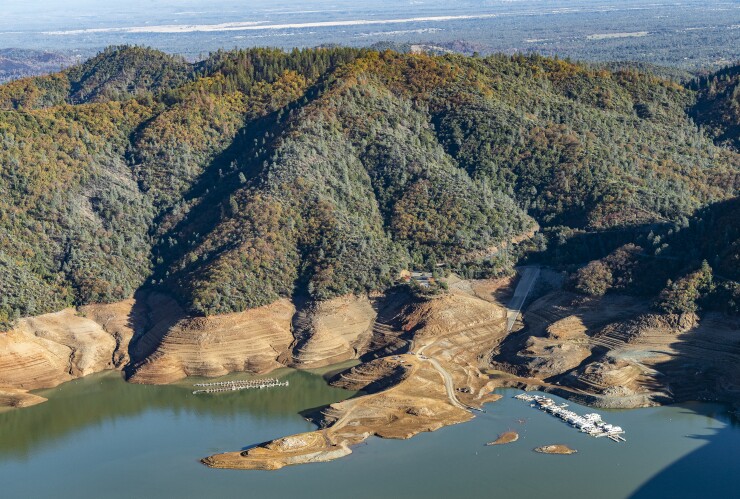Supporters of the
In a “last call” for major donors, supporters of the ballot measure wrote, “the campaign finds itself in the inexplicable position of having a solution everyone wants, but unable so far to raise funds to qualify it for the ballot.
“Virtually every expert in California agrees that more water infrastructure is necessary; that conservation alone will not protect Californians from the impact of climate change,” organizers wrote in a release. “Projects to capture more storm runoff and recycle more urban wastewater are urgently needed, and if this initiative is approved by voters in November, these projects would receive state funding and they would get built.”
A poll conducted by David Binder & Associates in November found that 70% of registered voters would support the state spending money on water infrastructure.

The effort needs to raise $10 million to gather the million signatures needed to qualify for the November 2022 ballot, and so far has raised $250,000, said Edward Ring, former senior fellow at California Policy Center, and the lead proponent of the Water Infrastructure Funding Act.
If passed, the initiative would set aside 2% of the state’s general fund — that’s currently about $3.5 billion per year — for projects aimed at increasing California’s water supply. The general fund allocation would continue until completed projects add another five million acre-feet per year of water supply to California’s farms and cities.
It would allow 1%, or half of each year's funding, to be used to pay for financing costs of bonds for new projects, Ring said, which could unlock the issuance of $30 billion in bonds.
Funding to pay signature gatherers isn't the only obstacle facing the ballot measure, however.
Environmental groups have
The independent Legislative Analyst’s Office notes the state’s agriculture sector uses about 31 million acre-feet of water every year. California’s urban population uses about 8 million acre-feet of water per year. Historically, California’s water projects have been paid for primarily by those who generate the most benefit.
They are also opposed to allowing water projects to be fast-tracked with limited environmental review; and dedicating a set amount of money for an unlimited time frame to water projects, which could lock the state into an unneeded expense in lean years.
Much of the outcry from environmental groups, including the Sierra Club, has been over the inclusion of projects that would construct dams and desalination plants, Ring said.
But he argues the ballot measure includes a range of ways to increase water supply, including funding to propel conservation. And the state water commission would decide where the money would be spent as they have historically, he said.
"We have to do something in California," Ring said. "The local communities don't have the ratepayer base to pay for private water infrastructure. If you don't subsidize water projects with state spending, then farmers can't afford to grow tomatoes or lettuce."
Some help could be on the way from the federal government.
Federal lawmakers began last week the months-long process of hearings in both the House and the Senate to write the Water Resources Development Act, a biennial process that funds the Army Corps of Engineer’s civil works projects ranging from ports to harbors, flood zones ecosystem restoration.
The hearings are expected to bring an unprecedented amount of money for water projects. The Army Corps is on track to receive between $80 billion to $100 billion to





